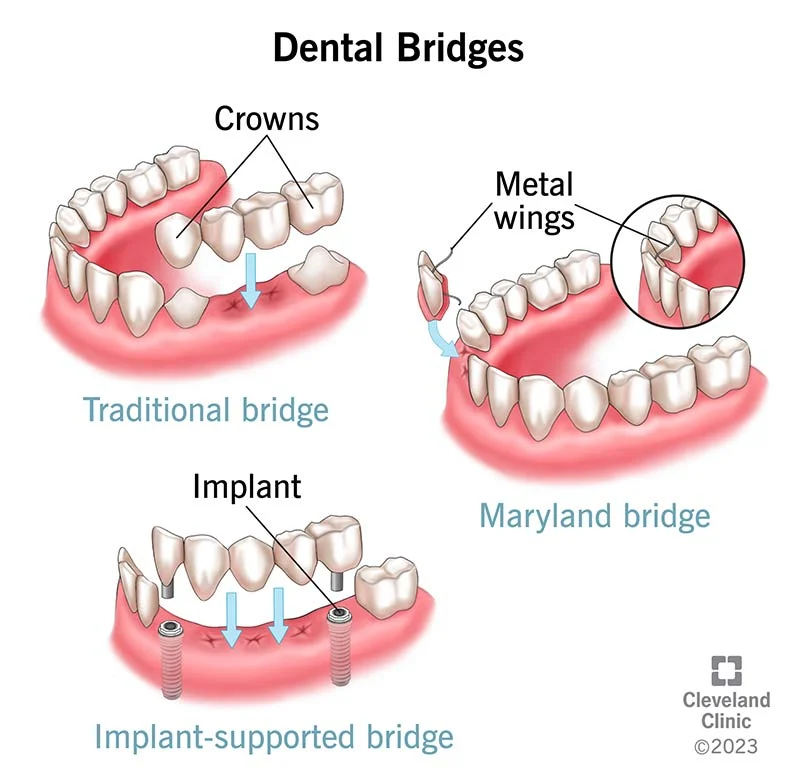Our Values
Guided by integrity, compassion, and excellence in all we do.
Dental bridges replace missing teeth. Specifically, they can replace one tooth or a row of missing teeth. As the name implies, this appliance literally “bridges the gap” in your smile. Dentists can create custom bridges that match the shade of your natural teeth.
There are different parts that make up a dental bridge: Abutments are the structures that support your dental bridge. While the term often refers to natural teeth, it can also refer to tiny connector posts used in dental implant-supported bridges. Pontics are the artificial (false) teeth that fill in the gap left behind by missing teeth.
Depending on your situation and the type of bridge you receive, your bridge might consist of one or more abutments and one or more pontics.

Once you and your dentist determine that a bridge is the best replacement for your missing tooth or teeth, you will be advised of different materials that the dental laboratory can use to make your restoration. Material availability will depend upon where in the mouth the bridge will be placed, whether or not you grind or clench your teeth (bruxism), your dental insurance coverage, and other factors outlined by your dentist.
Today’s bridges can be fabricated from a combination of porcelain and metal, porcelain and gold, or exclusively with high-strength metal-free materials such as zirconia or alumina.
Just deciding you’re ready to transform your smile is a big step. The next step is deciding the best way to do it. See why 13 million people have chosen Invisalign clear aligners.
This is the most common type of dental bridge. It consists of dental crowns (caps) on both ends with pontics (artificial teeth) in between. A dentist bonds the crowns to your natural teeth (abutments) on either side of the gap, and the artificial teeth (pontics) fill in the space between. Dentists use traditional dental bridges when you have healthy natural teeth on both sides of the gap.
A cantilever bridge is similar to a traditional bridge. But there’s only a crown on one end, not both. So, when your dentist bonds the bridge onto your abutment tooth, the artificial tooth (pontic) “hangs over” or extends across the gap. Dentists use cantilever bridges when you only have natural teeth on one side of the gap. Due to their design, cantilever bridges aren’t as strong as traditional bridges.
A Maryland bridge (or resin-bonded bridge) uses metal wings instead of crowns to secure your bridge. A dentist bonds the wings to the backs of your neighboring teeth to hold your bridge in place. Dentists typically use Maryland bridges to replace front teeth. These appliances aren’t strong enough to withstand the chewing forces of back teeth.
An implant-supported bridge is similar to a traditional bridge, but it rests atop dental implants instead of natural teeth. Dental implants are small threaded posts that replace missing teeth roots. Before attaching a bridge to dental implants, your implants must fully integrate (fuse) with your jawbone. This process takes three to six months on average, but it can take longer depending on your situation. Dentists can use implant-supported bridges when you have three or more missing teeth in a row.
Our office accepts most major dental insurance providers. For additional questions regarding insurance, please contact our office.












PDA empowers you to expand your dental practice and enhance your expertise through collaborative partnerships! connect with us now discover the possibilities.